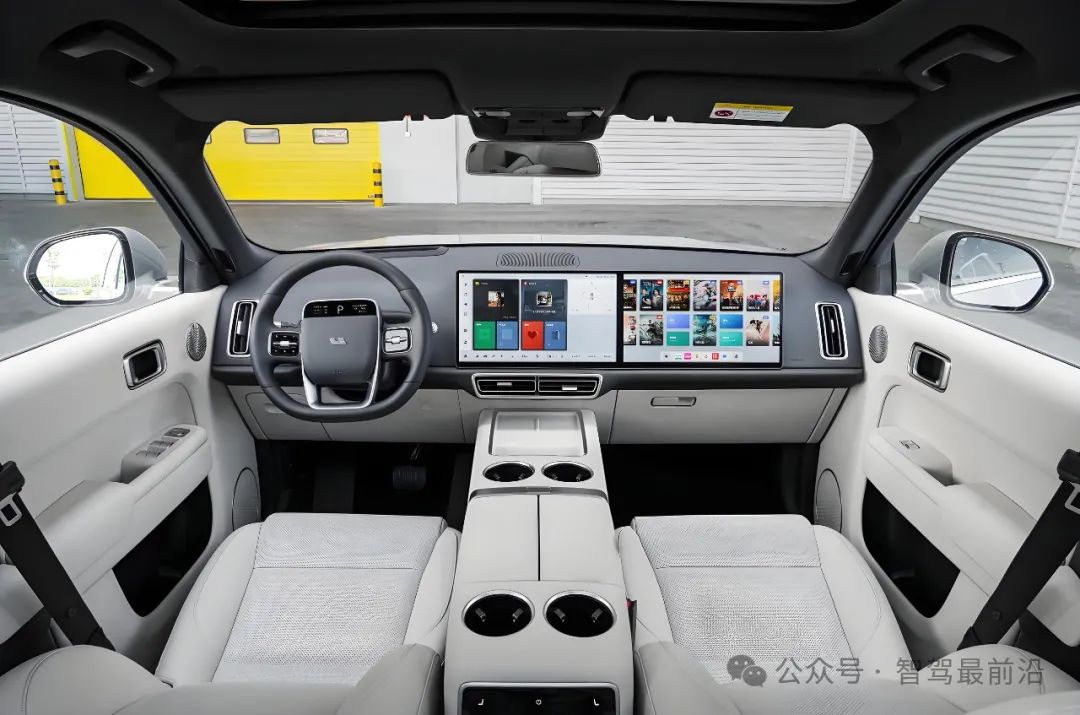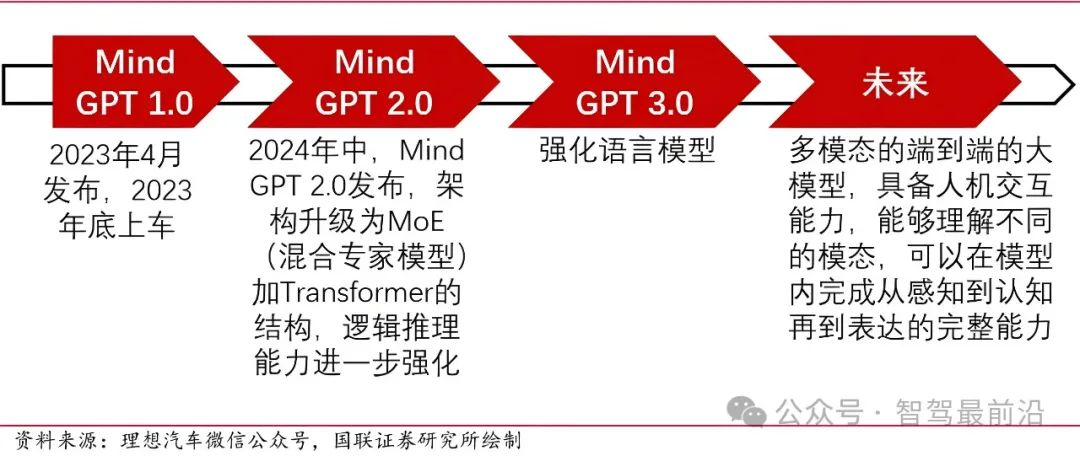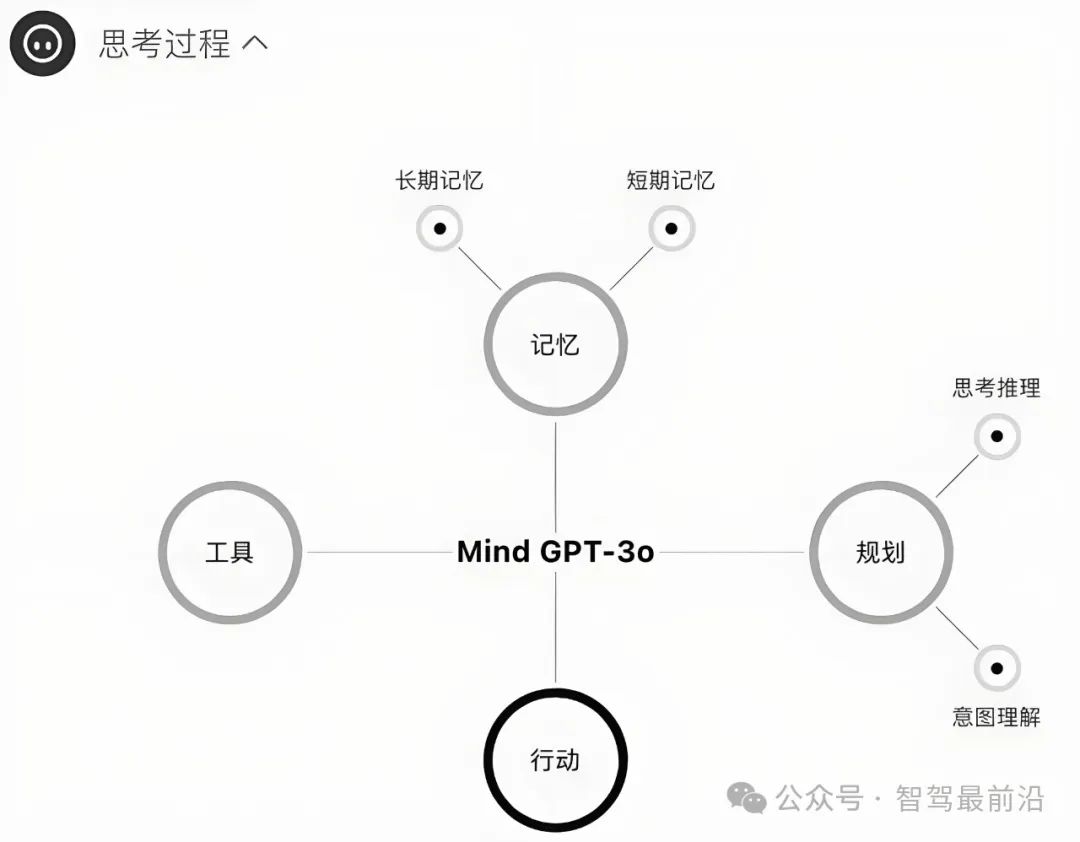How Li Auto Navigates AI Exploration in Intelligent Driving
![]() 03/19 2025
03/19 2025
![]() 521
521
Amidst the accelerating globalization of automotive intelligence and digitization, Li Auto, a pioneering new-energy automaker, has firmly established artificial intelligence (AI) as its cornerstone for future development. The company is striving to transition from assisted driving to human-like intelligent agents by deepening its exploration in intelligent driving, spatial intelligence, and intelligent expansion. With the vision of "automobilizing artificial intelligence," Li Auto has outlined a strategic layout to achieve the harmonious evolution of in-vehicle AI and spatial intelligence through proprietary large models and multi-terminal ecosystems. Its AI journey progresses through three distinct stages:
1. Capability Enhancement Stage - Initially focusing on auxiliary tasks to achieve vehicle intelligence.
2. Assistant Stage - Elevating to a higher level of intelligent assistance through multitasking and result accountability mechanisms.
3. Silicon-based Family Member (Agent) Stage - Achieving independence from command constraints, enabling autonomous judgment and decision-making.

This phased strategic approach not only aligns with the natural laws of technological evolution but also provides a clear roadmap for enterprises to seize the initiative in future competitions.

Evolution of Li Auto's Intelligent Driving Technology
1.1 Integration of End-to-End Large Models and VLM Models
Li Auto employs a dual-system architecture that combines end-to-end large models with visual language models (VLMs), enabling L3-level autonomous driving. It primarily utilizes in-vehicle sensors to gather vast amounts of real-time data, processed by end-to-end models for planning and decision-making. Recognizing the challenges of pure end-to-end models in ensuring learning accuracy in complex scenarios, Li Auto introduces VLMs as a "reference answer" system, integrating past rule-based achievements to provide clear guidance to the large model. This design mirrors the human brain's "fast intuition" and "slow rationality" collaborative mode, enhancing the model's safety and robustness in complex scenarios.

End-to-End + VLM Model
As illustrated above, the end-to-end large model inputs sensor data (including LiDAR, cameras, millimeter-wave radars, etc.), directly outputting decision information like path planning and speed control after deep neural network processing. The VLM leverages visual and linguistic information to provide additional analysis of traffic signs, road conditions, etc. Their combination forms a more precise driving decision system. Currently, it adopts the "Learning by Watching" method, imitating human driving behavior, but this approach has limitations with long-tail data and extreme environments. Therefore, it will gradually transition to the "Learning by Practicing" mode, continuously training generative visual models to build world models and improve future scenario prediction capabilities.
2.2 World Model and MPI Optimization
The leap from L3 to L4 hinges on improving the MPI (Miles Per Intervention) indicator, currently below 200 kilometers, indicating substantial human intervention in complex scenarios. Li Auto is exploring world model technology to build the vehicle's comprehensive perception of the surroundings through "generative visual models." The world model captures static information and predicts future changes based on historical data, providing the decision-making layer with "textbook"-like answers. By using decomposed world models and reward functions to dynamically plan and optimize data labels, it aims to significantly reduce the impact of long-tail data on model accuracy.
Through the synergy of end-to-end and VLM models, Li Auto is gradually advancing its intelligent driving technology from initial L3 to future models with partial L4 capabilities, not only enhancing driving safety but also laying a solid foundation for the commercialization of automotive intelligence.

Evolution of Li Auto's Spatial Intelligence Technology
2.1 From Natural Language Processing to Multi-modal Perception
Li Auto's spatial intelligence exploration is equally noteworthy. Mind GPT has undergone multiple iterations, with cumulative pre-training data reaching 10 trillion tokens. After the release of Mind GPT 1.0, Li Auto's assistant swiftly entered the in-vehicle system via OTA upgrades, becoming a key interaction entry for the infotainment system. Mind GPT 2.0 adopts a MoE (Mixture of Experts) and Transformer combination, doubling the model size while maintaining low inference costs. Mind GPT 3.0 further strengthens the language model's core capabilities and is expected to integrate multi-modal data like speech, vision, and language, completing a closed loop from perception to cognition to expression within a single model.

Li Auto Mind GPT Upgrades
These iterations indicate Li Auto's leadership in intelligent driving hardware and algorithms, while actively deploying in smart cockpits and voice interaction. By integrating natural language processing and image recognition, the in-vehicle system accurately understands user commands, provides information queries, and achieves seamless infotainment-mobile app interconnection, crucial for enhancing user experience, expanding data sources, and building a comprehensive corpus.
2.2 Multi-terminal Applications and Ecosystem Construction
Li Auto's intelligent assistant extends beyond the infotainment system to mobile devices and other intelligent terminals, achieving seamless cross-platform integration. Based on the large model's natural language interaction system, it meets user needs in voice commands, knowledge Q&A, and emotional interaction. Through continuous model parameter optimization and corpus expansion, Li Auto's Assistant holds advantages over competitors like Huawei and Xiaomi. Leveraging its "GPT-capable" advantage, Li Auto is narrowing the gap with leading mobile phone manufacturers in natural language processing.

Li Auto Mind GPT 3.0 Architecture
Through its proprietary AI platform, Li Auto has created a vehicle-centric ecosystem encompassing in-vehicle systems, mobile phones, and home appliances. This ecosystem enables efficient data interchange and provides a solid foundation for future cross-scenario applications, delivering a smoother user experience in real-time vehicle interaction and smart home control.

Li Auto's Smart Industry and Smart Business Expansion
3.1 Construction of a Full-stack Self-developed Smart Factory
In smart manufacturing, Li Auto's full-stack self-developed smart system distinguishes itself from traditional manufacturing. Through the Li-MOS system, it seamlessly integrates production and sales. Upon order placement, the system automatically generates precise production plans down to workstations and sequences, sending material procurement plans to suppliers via LI-SCM, ensuring automated operations throughout. This end-to-end digital management significantly improves production efficiency, ensures efficient production-sales docking, and supports cost reduction and quality enhancement.

The smart factory's core lies in data collection, real-time monitoring, and dynamic scheduling based on big data and machine learning. It precisely monitors all production line aspects, real-time analyzing equipment status, material supply, and workstation scheduling, optimizing the production process. With high-precision sensors and edge computing, the factory promptly responds to abnormalities, predicts equipment failures through big data, and enables preventive maintenance. This smart manufacturing system is a pivotal step towards automotive digital transformation and a competitive advantage in fierce markets.
3.2 AI Facilitates Smart Business Model Transformation
In smart business, Li Auto integrates large model technology with business data and knowledge graphs to construct AI assistants in retail, marketing, customer service, financial anti-fraud, and analysis. These assistants not only aid precise marketing and enhance user stickiness but also provide intelligent support in after-sales service and complaint handling, significantly reducing labor costs and operational risks. By embedding AI in business processes, Li Auto aims to form an intelligent operation mode spanning product design, manufacturing, to market sales.
To build a smart business platform, Li Auto addresses challenges like data integration, real-time analysis, and cross-system collaboration. Relying on vast user data and the Internet of Vehicles platform, it gains deep insights into user behavior through natural language processing, big data analysis, and machine learning, supporting product optimization, marketing, and after-sales service. For instance, in customer service, an intelligent Q&A system and voice interaction platform instantly answer user queries, rapidly respond to emergencies, and improve customer satisfaction. In marketing, precise user data analysis enables personalized recommendations and precise advertising, greatly enhancing conversion rates.
The smart business platform also fosters an open ecosystem, attracting external partners and upstream-downstream enterprises. By sharing data and technical resources, Li Auto forms economies of scale, continuously expands business boundaries through cross-border collaboration, and realizes diversified business model development.
In summary, Li Auto has adopted a comprehensive, multi-dimensional AI strategy. From integrating end-to-end large models and VLMs in intelligent driving to continuously iterating the Mind GPT series in spatial intelligence, and expanding smart industry and business, Li Auto is transitioning from traditional automotive manufacturing to a digital and intelligent ecosystem, synergistically enhancing data, computing power, and model capabilities.
-- END --







